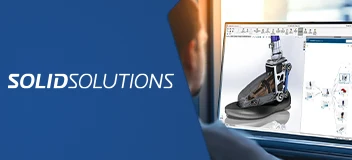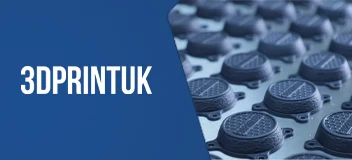Understanding Computational Fluid Dynamics (CFD)
Understanding Computational Fluid Dynamics (CFD) is not as complicated as it may seem, and it may surprise you to see just how often it is found in the world around us!
Ever wonder how designers predict the aerodynamic efficiency of a Formula 1 car hurtling down a racetrack at over 200 miles per hour, or how engineers optimize the fuel efficiency of a commercial aircraft cruising at high altitudes? These marvels are made possible through understanding Computational Fluid Dynamics (CFD), a cutting-edge discipline that harnesses numerical methods and powerful algorithms to simulate fluid flow phenomena in real-world applications. From shaping the contours of skyscrapers to improving the performance of wind turbines, CFD plays a crucial role in virtually every aspect of modern engineering and innovation. To further understand Computational Fluid Dynamics, here are the answers to some of the most commonly searched questions about CFD:
1. What is CFD used for?
CFD is used to simulate fluid flow phenomena in various applications such as aerodynamics (aircraft and car design), hydrodynamics (ship hull optimization), thermal management (cooling systems), and environmental studies (air and water pollution dispersion). It offers a unique and accurate way to measure just how water, air, or heat would move through a given system.
2. How does CFD work?
CFD works by dividing the fluid domain into a grid of small control volumes, applying mathematical equations (like Navier-Stokes equations) to each volume, and solving these equations iteratively using computer algorithms to predict fluid behavior.
3. What are the advantages of understanding Computational Fluid Dynamics?
CFD allows engineers and scientists to visualize and analyze complex fluid dynamics without costly physical experiments. It helps in optimizing designs, predicting performance, and understanding flow characteristics in a wide range of scenarios. Fully understanding Computational Fluid Dynamics and all of its mathematical intricacies is not necessary to grasp just how useful they can be.
4. What are the limitations of CFD?
CFD simulations require accurate modeling assumptions and validation against experimental data for reliability. They can also be computationally intensive and require significant expertise to set up and interpret results correctly.
5. How accurate is CFD?
The accuracy of CFD depends on factors such as grid resolution, turbulence modeling, and boundary conditions. Validation against experimental data is crucial to ensure that simulations reflect real-world behavior accurately.
6. What industries use CFD?
CFD is widely used in industries such as aerospace, automotive, energy (including renewable energy), biomedical engineering, environmental engineering, and manufacturing. It plays a crucial role in product development, performance optimization, and research.
7. What is the future of CFD?
The future of CFD involves advancements in computational power, numerical methods, and modeling techniques. This includes improved accuracy through better turbulence modeling and incorporation of Multiphysics simulations (combining fluid dynamics with other physical phenomena). Additionally, increased integration with artificial intelligence and machine learning for automated model calibration and optimization is anticipated to enhance CFD capabilities further. Understanding Computational Fluid Dynamics and everything that it applies to will only become more and more valuable as time goes on.
In conclusion, Computational Fluid Dynamics continues to evolve as a vital tool for engineers and scientists, enabling them to tackle complex fluid flow challenges and innovate across various industries. Understanding Computational Fluid Dynamics is as easy as recognizing how relevant it is in the world around us, along with how much it plays into our daily lives!
Are you passionate about Computational Fluid Dynamics (CFD) and ready to apply your skills in real-world challenges? Explore career opportunities with TriMech in engineering fields where CFD expertise is in high demand. Whether you’re interested in aerospace, automotive, renewable energy, or biomedical sectors, there’s a world of possibilities awaiting you.
Have a Product Idea?
Discover our product development services tailored to startups, small manufacturers, and inventors.
Design Newsletter
Get the latest news curated for designers, makers and inventors.
Product Design Experts related to this content:
Discover our team of designers, engineers, project managers, and problem-solvers.
Chris Panosh, Manager, Engineering Services
Chris Panosh is based out of Charlottesville Virginia. Chris has a B.S. in Mechanical Engineering from North Carolina State University.
More from our Blog
The Top Cities to Look for International Product Design
It’s important to look for inspiration during your travels! Here are the top cities to look for international product design inspiration!
Kharaband Wearable Device Nominated for Prestigious Award
In this day and age, it’s hard to not be in a room with at least one person wearing a smartwatch these days, or someone…
BLADETECH Spring-Loaded Hockey Skate Blade Design Increases Player Speed!
BLADETECH innovate hockey skate blade design absorbs energy created from the impact of the skate hitting the ice.
Need help with your Product Idea?
Tell us about your invention or product design idea and get the help you need design, build and bring it to market

















